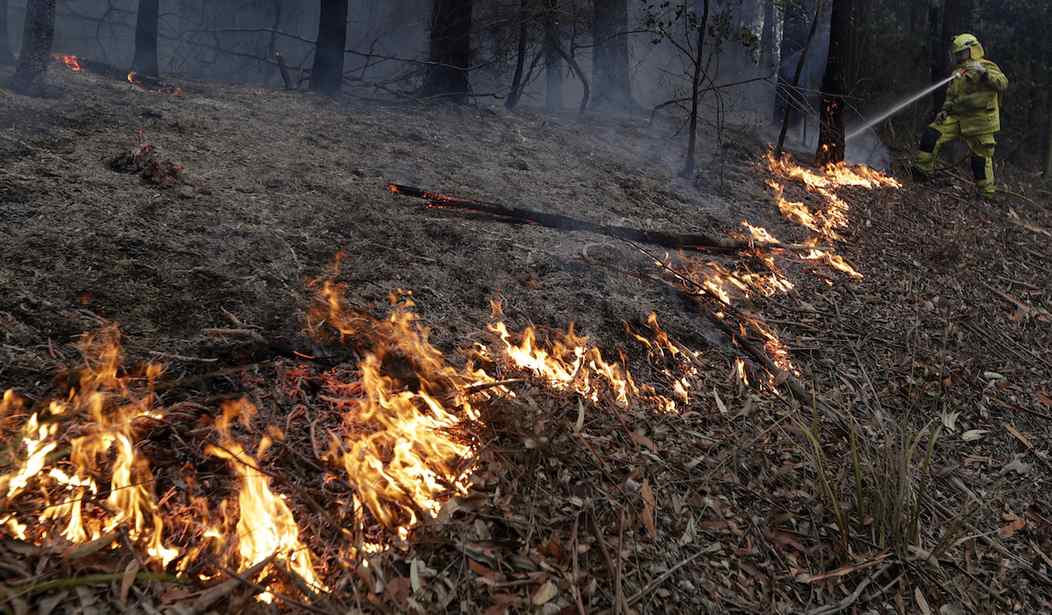Summer 2024 is proving to be a scorcher, and not just politically.
The National Interagency Fire Center reports that, as of August 4th, 85 large active wildfires were burning 2,166,616 acres nationwide. Since January 1st, 4,565,907 acres have burned across the country.
“While the number of wildfires is slightly below the 10-year average, the number of acres burned is above the average of 3,795,120 acres,” conceded the agency.
In Wyoming, Congresswoman Harriet Hageman’s homestead was engulfed in flames, and my friend and professional hunter Kristy Titus and her ranch nearly escaped them, too.
“It’s been pretty devastating,” Rep. Hageman told the Cowboy State Daily. “It was a very old log house, with very thick walls because they didn’t split the wood. It was very cold in the wintertime.”
Recommended
In recent years, media agencies have begun toning down the alarmism on wildfire coverage, though misinformation still persists. But it doesn’t help when government agencies like the U.S. Forest Service (USFS) and National Oceanic and Atmospheric Administration (NOAA) fan the flames.
USFS, an agency that should strictly follow science, is extremely climate coded these days.
“The Forest Service is incorporating the best ecological and climate science into its management to ensure that National Forests continue to produce the benefits that the American people enjoy,” its website reads. What does the department recommend Americans do to “mitigate” climate change? It urges us to “use alternative energy” and reduce fossil fuel usage to release “fewer greenhouse gasses” into the atmosphere.
Similarly, a NOAA webpage claims there’s a connection between climate and high-intensity wildfires, suggesting it’s the largest contributor behind them. “Climate change, including increased heat, extended drought, and a thirsty atmosphere, has been a key driver in increasing the risk and extent of wildfires in the western United States during the last two decades. Wildfires require the alignment of a number of factors, including temperature, humidity, and the lack of moisture in fuels, such as trees, shrubs, grasses, and forest debris. All these factors have strong direct or indirect ties to climate variability and climate change,” it states.
This isn’t by accident, however. There’s a whole-of-government approach by the Biden-Harris administration to tie everything back to climate change under the January 27th, 2021 “Executive Order on Tackling the Climate Crisis at Home and Abroad”, even if there’s no established connection. Under new finalized rules and executive action, climate resilience is prioritized over forest management. It stems from Biden’s Strengthening the Nation’s Forests, Communities, and Local Economies (E.O. 14072) executive order. Logging or other actual forest management tools be damned!
Their climate change and forest conservation framework claims it is “inventorying mature and old-growth forests, setting reforestation targets on federally managed lands, and analyzing reforestation opportunities on state, Tribal and private lands.” But it created a “Climate Risk Viewer” to analyze “the risks and vulnerabilities of climate change across the landscape along with a call for public input on how national forests and grasslands should be managed for climate resilience.”
What input on forest management is the Biden administration actively seeking? Indigenous Knowledge, a non-scientific belief, will be accounted for when deciding how to manage our forests:
The Forest Service is also consulting with tribes and requesting feedback on current issues and considerations related to relying on the best available science including indigenous knowledge, as well as climate adaptation, mature and old-growth forests, and considerations for social and economic resilience.
There’s also the National Climate Resilience Framework that, shocker, doesn’t encourage a lick of forest management; just closing down more public lands to access under the America the Beautiful, or 30 by 30, initiative.
These policies will undoubtedly invite more fire suppression - the U.S. has been marked by a century of this ill-fated practice– which leads to more high-intensity wildfires observed today.
Much to the Biden administration’s chagrin, climate change isn’t the primary driver of high-intensity wildfires. The University of Montana found, unsurprisingly, arsonists - not climate change - ignite most destructive wildfires out West.
“Human ignitions started 76% of the wildfires that destroyed structures, and those fires tended to be in flammable areas where homes, commercial structures, and outbuildings are increasingly common,” the university noted.
A 2021 IOP Science study concluded these are the three key drivers of high-intensity wildfire: live fuel (53%), weather (23%), and climate change (14%). As I explained in the Daily Caller at the time, “Even in California, top forest scientists point to massive accumulation of wood fuel, not climate change, as the underlying factor behind intense events.”
Environmentalists have blocked proactive, sustainable forest management and even the replanting of trees, including iconic sequoias, at national parks. An analysis notes this is tied to an existing lawsuit to prevent the National Park Service (NPS) from conducting mechanical thinning “to guard against severe wildfires.”
Insanity. These are the same folks who tolerated sequoia trees nearly burning to death in 2021 under the guise of “protecting forests.”
We don’t need a climate-coded, whole-of-government forest management plan. We need more proactive management (including sawmills), mechanical thinning, permitting reform, and private investment.

























